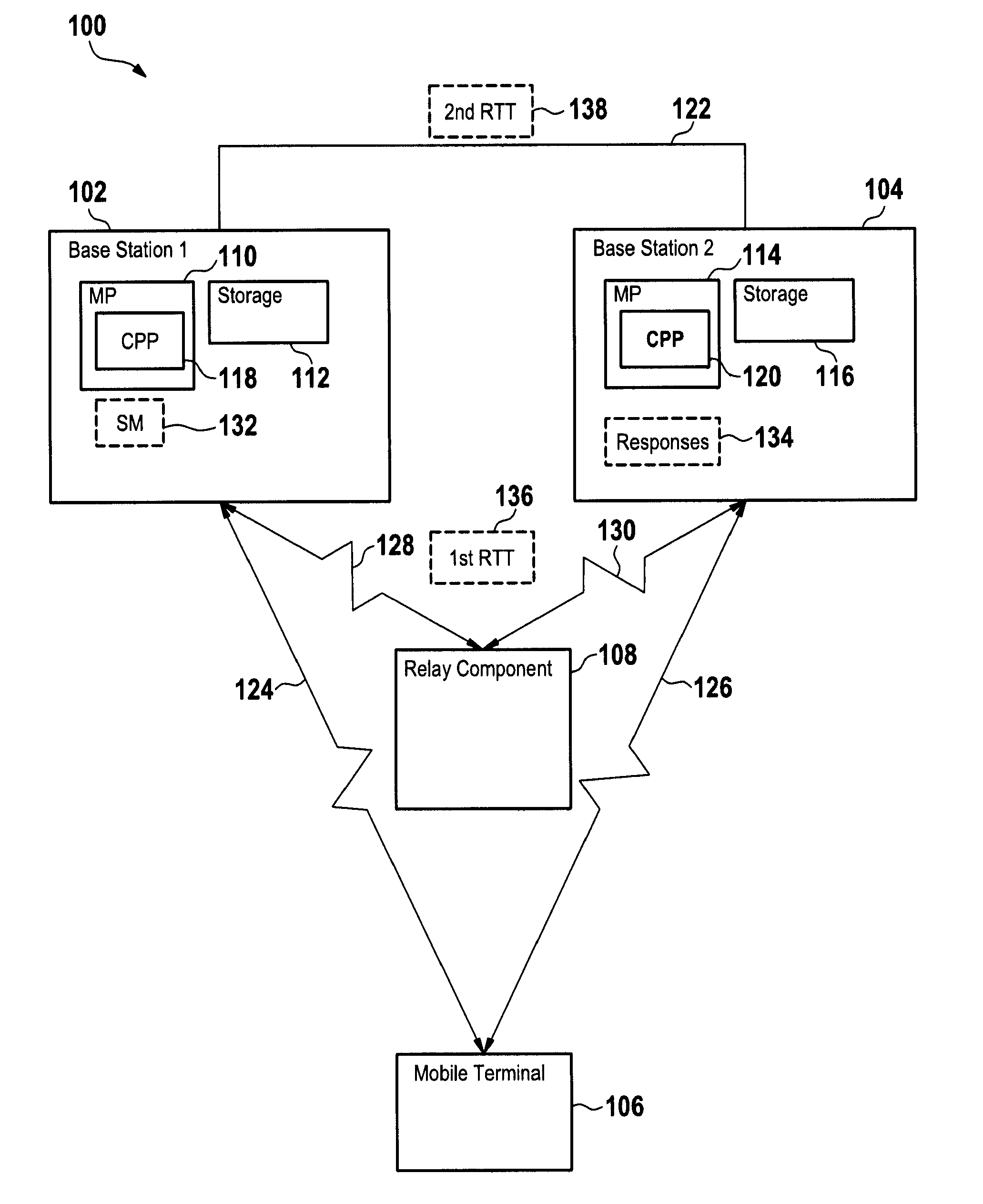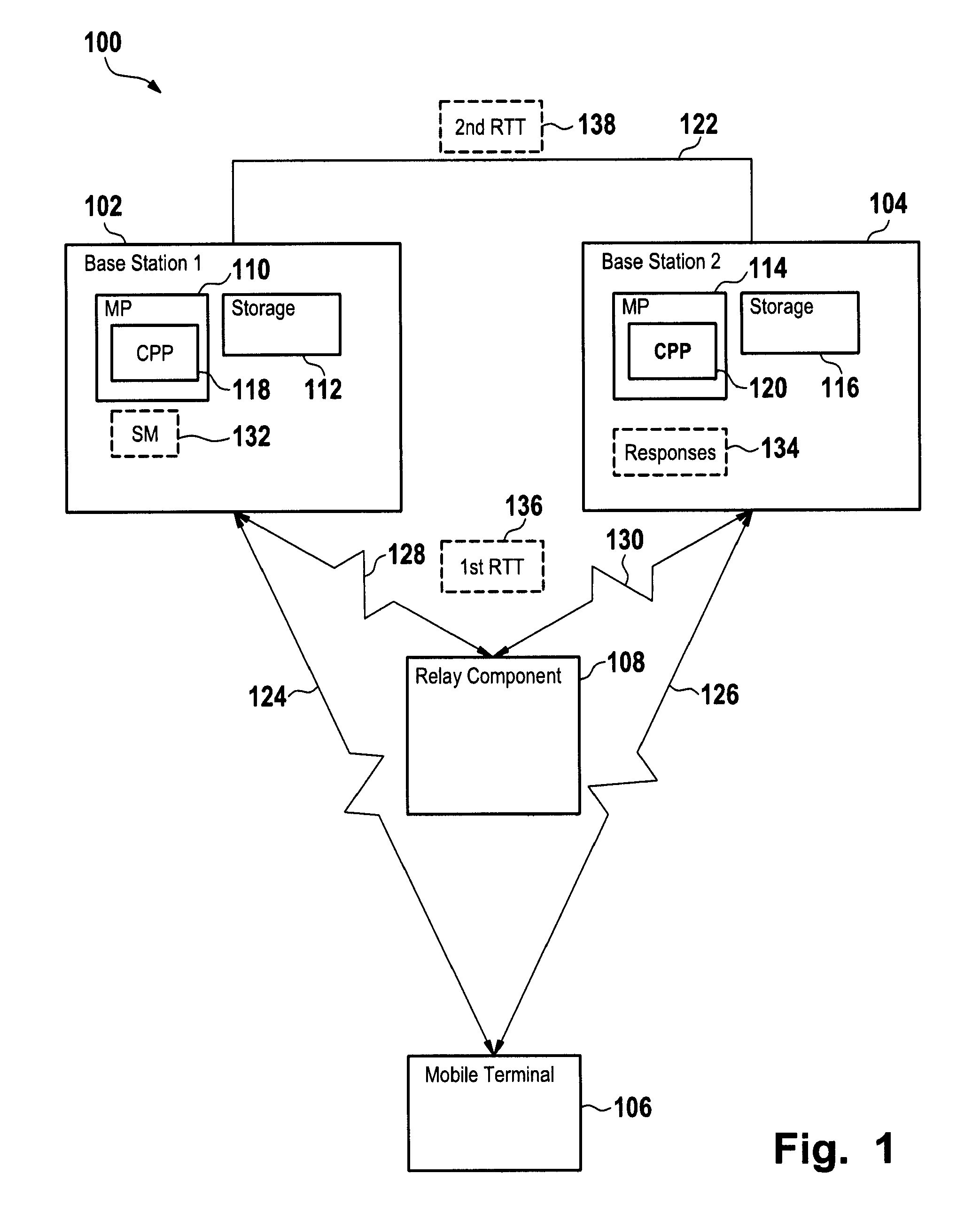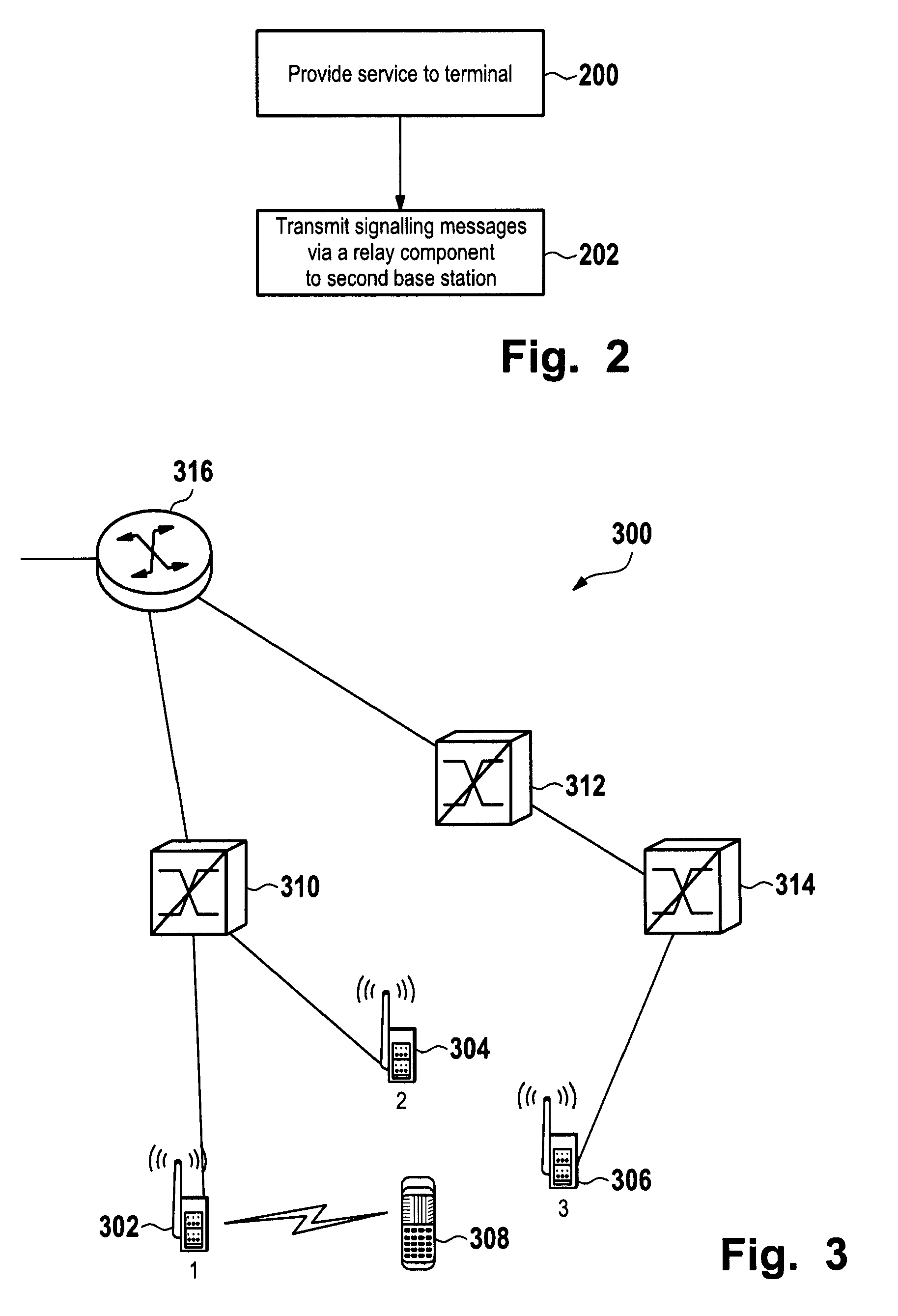Method of transmitting signaling messages
a technology of transmitting signal and message, which is applied in the field of transmitting signaling messages, can solve the problems of negative affecting the time critical applications running on the mobile terminal, and achieve the effect of reducing the delay of services to be delivered to the terminal during the handover
- Summary
- Abstract
- Description
- Claims
- Application Information
AI Technical Summary
Benefits of technology
Problems solved by technology
Method used
Image
Examples
Embodiment Construction
[0026]FIG. 1 shows schematically a block diagram of a communication network 100. The communication network 100 comprises a first base station 102 and a second base station 104. The first base station 102 comprises a microprocessor 110, and a storage 112. Similarly, the second base station 104 comprises a microprocessor 114, and a storage 116. The microprocessor 110 executes a computer program product 118 which is for example permanently stored on the storage 112 and loaded for execution into the microprocessor 110. Similarly, the microprocessor 114 of the second base station 104 executes a computer program product 120 which is permanently stored on the storage 116 and loaded for execution into the microprocessor 114.
[0027]The first base station 102 is connected via a wired communication path 122, e.g. a communication path provided by the backhaul network, with the second base station 104. Further, the first base station 102 holds an active connection over communication link 124 with...
PUM
 Login to View More
Login to View More Abstract
Description
Claims
Application Information
 Login to View More
Login to View More - R&D
- Intellectual Property
- Life Sciences
- Materials
- Tech Scout
- Unparalleled Data Quality
- Higher Quality Content
- 60% Fewer Hallucinations
Browse by: Latest US Patents, China's latest patents, Technical Efficacy Thesaurus, Application Domain, Technology Topic, Popular Technical Reports.
© 2025 PatSnap. All rights reserved.Legal|Privacy policy|Modern Slavery Act Transparency Statement|Sitemap|About US| Contact US: help@patsnap.com



